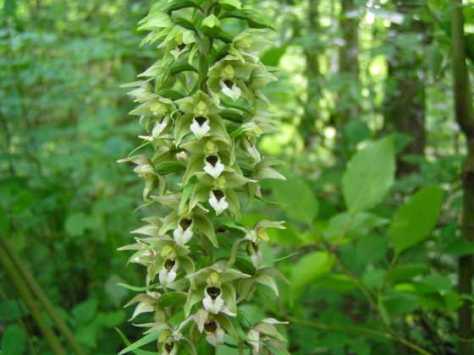I recently learned that we have a weedy orchid growing in the northern part of the United States. A visitor to our gardens had sent us a photograph for identification of this cool weed. This plant was eventually identified as Epipactis helleborine or broad-leaved helleborine. Epipactis helleborine is native to Europe, specifically, parts of Poland. Its introduction into the United States occurred in the late 1800’s when it was planted as a possible medicinal plant. The first documentation of broad-leaved helleborine was in 1879 in New York. Since this introduction, it has escaped to become a somewhat weedy plant found along hiking trails and the edges of woodlands. I have seen it in several locations around Boothbay, Maine and by “weedy,” I would say that it grows where it was not planted by humans.
It is an attractive and striking plant. Epipactis catches your eye because of the upright growth and broad, tapering leaves. Once it flowers, you will see the small, orchid flowers which occur in shades of white, green, pink, with just a touch of yellow. Since it is cold-hardy and can reproduce fairly easily, I wonder if anyone has tried conducting any breeding work with other orchid genera that might be more difficult to grow in the garden. I would love to try hybridizing Epipactis with Bletilla, Pleione, or Cypripedium.
Have you encountered broad-leaved helleborine in your garden? Do you leave them or remove the plants, counting them as weeds?
–Rodney
Images: New Hampshire Garden Solutions, Northeast School of Botanical Medicine

